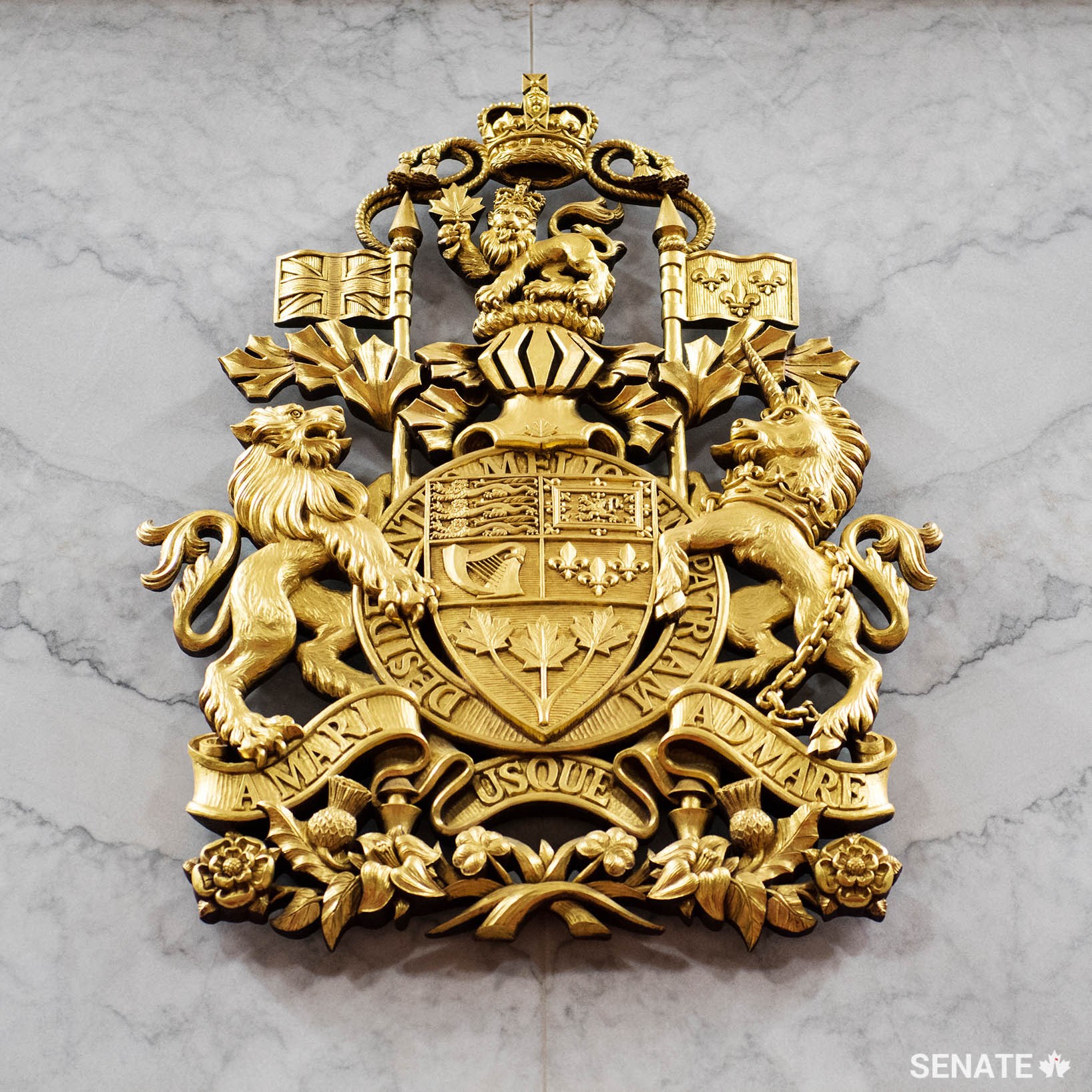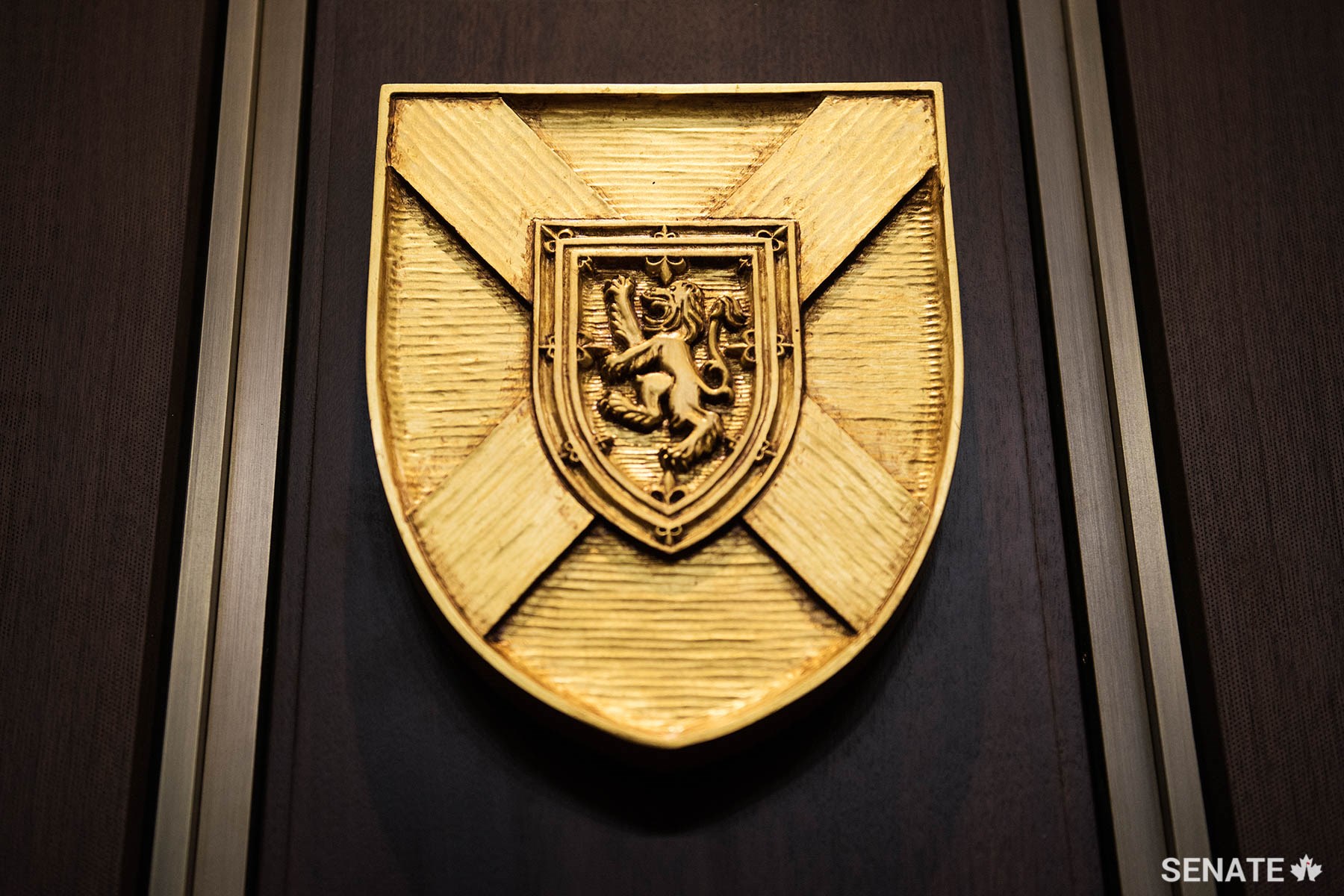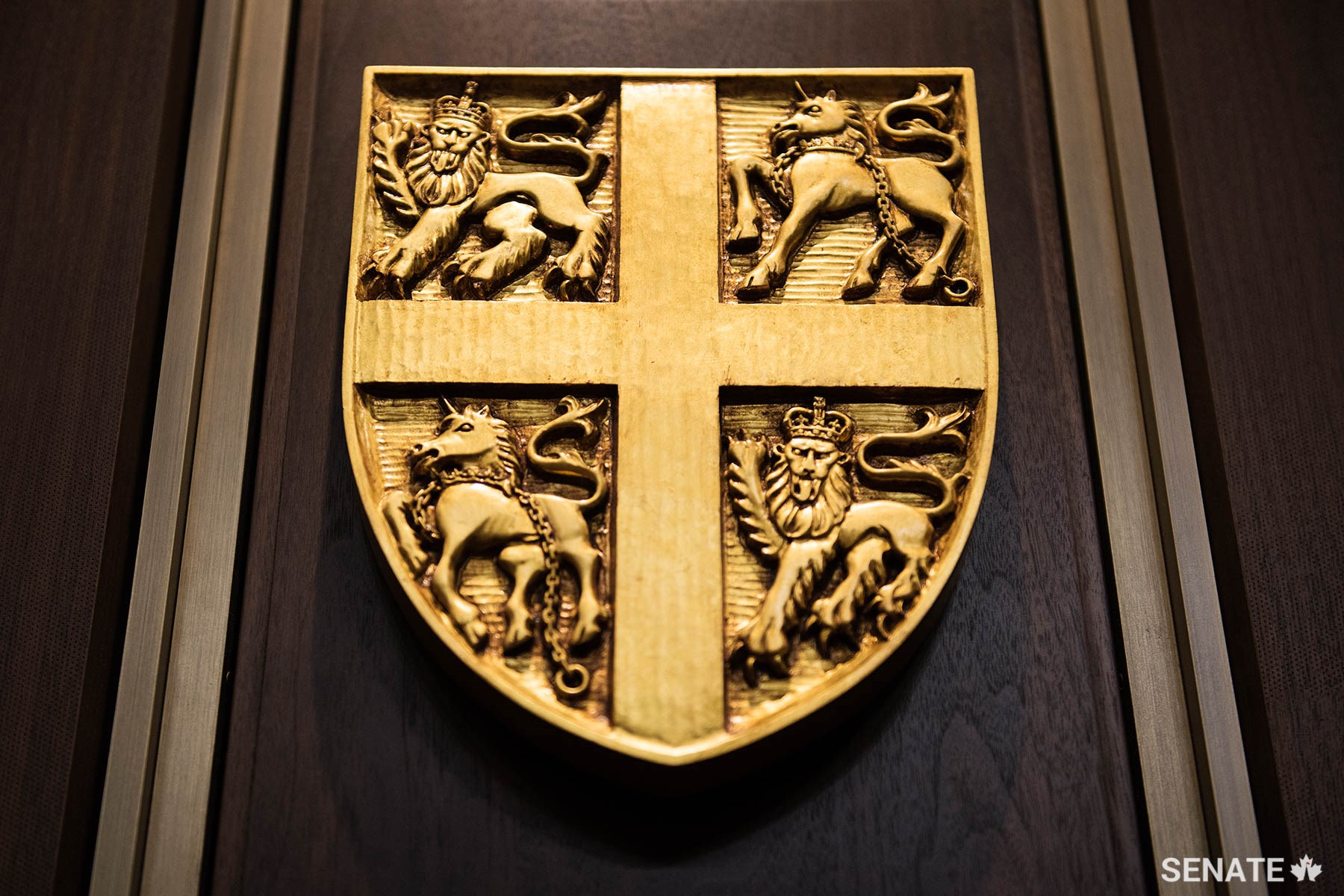The Senate’s sculptural tribute to Canada’s provinces and territories

In February 2019, the Senate moved to the Senate of Canada Building, a former train station built in 1912. The Senate is expected to occupy its temporary location for at least 10 years while Parliament’s Centre Block — the Senate’s permanent home — is rehabilitated.
Although Centre Block is shuttered for rehabilitation work, Canadians can still experience its art and architecture through the Senate’s immersive virtual tour.
“Incredible! It turned out even better than I’d imagined.”
Dominion Sculptor Phil White, Parliament’s official carver and custodian of its 150-year-old sculptural program, couldn’t help but admire the new Senate Chamber after 15 of his carvings — representing a year-and-a-half’s work — had just been mounted on its walnut-panelled walls.





Mr. White’s depictions of the provincial and territorial shields marry traditional design with cutting-edge production methods. He carved the shields partly by hand, partly with the aid of robotics, working with high-density polyurethane foam board instead of wood.
“It’s more practical and cost-effective now to carve in this synthetic material,” Mr. White said. “It’s similar to wood but weathers better and doesn’t shrink or crack or change shape.”
Once prototypes had been carved — roughly a six-month job — digitization specialists from Carleton University’s Azrieli School of Architecture and Urbanism helped Mr. White build photogrammetric 3D models of the carvings. Guided by this digital blueprint, a robotic milling machine roughed out duplicate copies. Mr. White and two assistants then refined details and textures by hand.
The final step was the finish. Mr. White gilded each carving by hand, a painstaking process of gluing squares of metallic leaf in place, brushing them smooth then sealing the entire piece in a translucent glaze that gives it a rich aged patina.
The tissue-thin veneer makes the carvings look like they were cast in metal.
“The leaf comes in sheets that are about three millionths of an inch thick,” Mr. White said.
Senator Scott Tannas, Chair of the Senate Subcommittee on the Long Term Vision and Plan, which oversaw the Senate’s move to the old Government Conference Centre, said the final result is remarkable.
“These heraldic designs are striking, refined and cost-effective at the same time. That’s in the spirit of the original 1912 building and in the spirit of the Senate’s move from Centre Block,” he said.
The space’s showstopper is a metre-high gilded sculpture of the Arms of Canada suspended over the dais occupied by the royal thrones and Speaker’s chair.
“There’s absolutely no machine work there,” Mr. White said. “That is 100% hand work – six months of it.”
This is the first official sculptural representation of the new Arms of Canada.
“All the 3D versions of the Arms of Canada on the Hill depict either the 1921 or 1957 version,” Mr. White said. “This is the current one, approved by Queen Elizabeth II in 1994.”
Mr. White hopes his carvings will become part of the permanent fabric of the building and feature in the chamber when the building reverts to its previous role as host to international conferences and first ministers’ meetings.
“These pieces are surprisingly robust. I don’t see why they couldn’t last hundreds of years.”
An earlier version of this article was published on October 30, 2018.
This article is part of a series about the Senate of Canada’s move.











